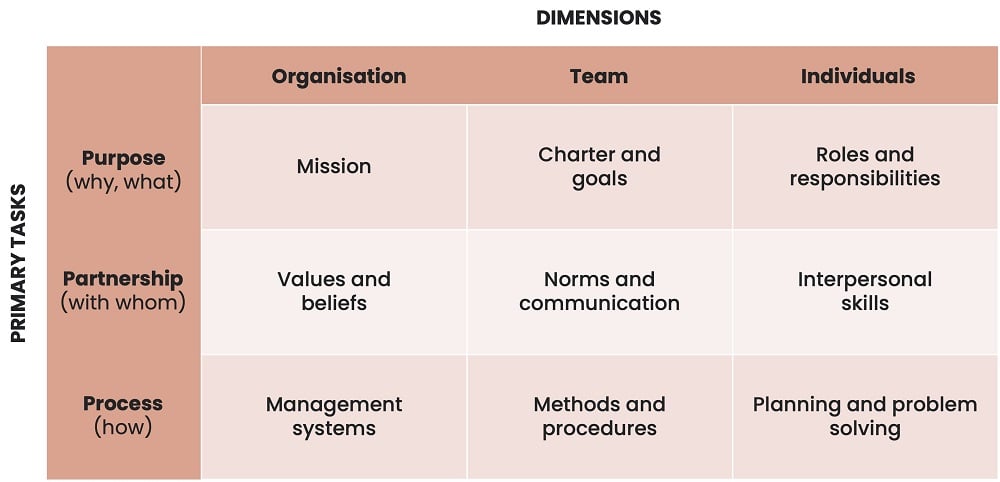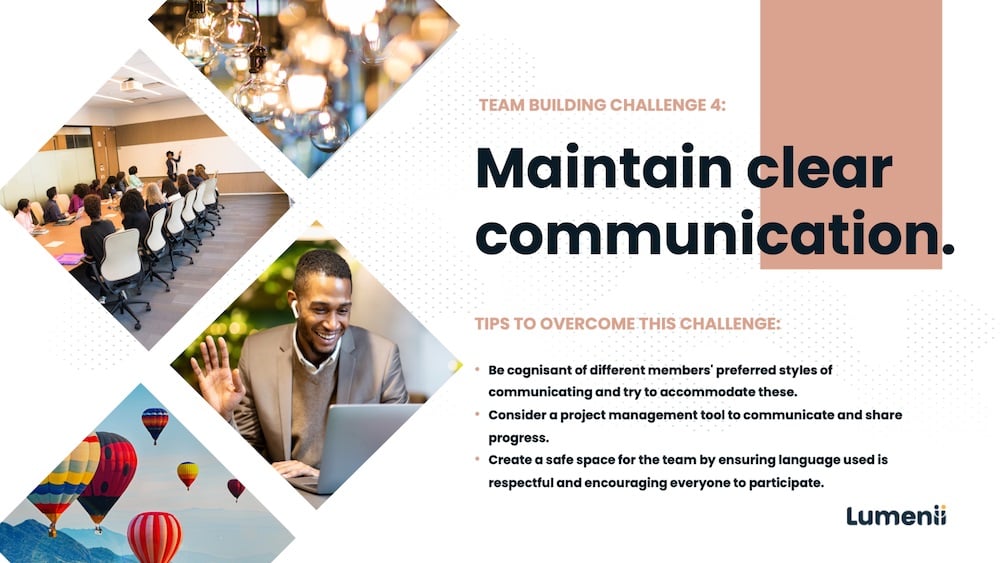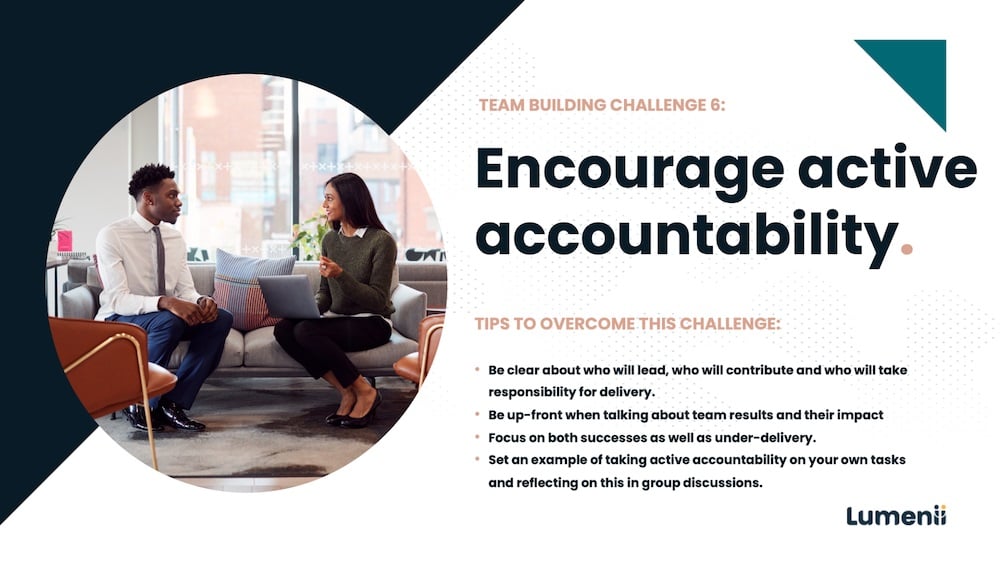10 Secrets on How to Build High Performing Teams
Team performance can make or break an organisation’s success. Here are our top research-led strategies for building high-performing teams.
An Introduction to Creating High-Performing Teams
Effective teams are a critical factor in successful companies. When people work well together, they excel at delivering complex, creative work in fast-paced environments. However, building and sustaining high performance teams can be a significant challenge to the organisation and its leaders.
Below we have summarised the key challenges experienced by leaders when setting out to build and improve successful teams.
No matter how brilliant your mind or strategy, if you’re playing a solo game, you’ll always lose out to a team.” - Reid Hoffman, LinkedIn cofounder
Describing High-Performing Teams
High performing teams can be considered the ultimate goal of team building. They consist of a group of individuals working across multiple disciplines who are aligned, committed and excel at the achievement of shared goals.
Scholtes, Joiner and Streibel (2003) created a model to guide the development of teams, based on three key aspects of the business: (1) individuals, (2) the team, and (3) the organisation. For each of these three aspects, there are three primary tasks to consider in the development process: (1) purpose, (2) partnership, and (3) process.
The resulting nine areas form the foundation of a team’s development strategy, and can also be used to monitor performance over time.
 Source: Scholtes et al. (2003)
Source: Scholtes et al. (2003)
Challenges to Creating and Maintaining High-Performing Teams
At Lumenii, we’ve identified the 10 most common challenges, with tips on how to overcome them
-
Ensure commonly understood goals
-
Mutually define roles and responsibilities
-
Enhance trust and respect
-
Maintain clear communication
-
Understand team potential and performance
-
Encourage active accountability
-
Proactively deal with conflict
-
Encourage continuous learning
- Foster a culture of shared leadership
Ensure Commonly Understood Goals

A common vision and purpose are the foundation for why the team exists and what they need to accomplish on a day-to-day basis. Each member needs to clearly understand and buy into the team’s reason for being a prerequisite for performance.
Tips for Team Leaders:
-
Schedule time specifically allocated to the team and it's goals, where day-to-day work is not discussed.
-
Make that each team member is aware of and can articulate shared goals.
-
Provide a big-picture perspective by sharing organisation and division-level goals.
-
Ensure that team and individual goals are future and task-focused, with specific milestones.
Mutually Define Roles and Responsibilities

The saying goes that the whole is greater than the sum of its parts. For a team, this only holds true if the roles and responsibilities of its individual members are clearly defined. This helps to eliminate duplication of work, ambiguity, conflict and lack of accountability.
Early in the formation of a team, roles and responsibilities are typically established by the manager. However, in high performance teams this increasingly shifts to mutually redefining responsibilities in line with evolving group dynamics, skill sets and natural strengths.
As people leave or new members join the team, the roles and responsibilities of existing members may also need to be re-examined. It is good practice to regularly review these, either in a group format or one-on-one.
Tips for Team Leaders to Define Roles and Responsibilities
-
Run a group exercise to together discuss team output, roles, responsibilities and gaps
-
This exercise can together reflect on:
-
what the team needs to do,
-
how each person defines their role and responsibilities (what they think)
-
how they think others see their responsibilities (what others think)
-
Where they feel there are role or responsibility gaps
-
Regularly discuss roles and responsibilities together with each member
-
Proactively follow up with members on their areas of accountability
-
Empower employees with responsibilities that will challenge their capabilities and create trust by encouraging them to complete these tasks according to how they see fit
Enhance Trust and Respect

It is well known that trust and mutual respect are key ingredients to healthy working relationships. Trust and transparency are critical between a leader and their team, as well as between members, to encourage creativity, risk-taking and conflict resolution.
Trust can also fluctuate over time; for example, individuals joining or leaving the team can have an impact on dynamics, or a stressful new project can cause strain. That’s why building and supporting trust needs to be an ongoing focus as a leader.
Trust is created when individuals feel as if they are able to share their failures and uncertainties openly. As a manager, you can create trustworthy relationships by being curious, rather than judgemental in interactions. This could be considered as active listening.
Tips for Team Leaders to Enhance Trust and Respect
-
Set an example of openness and transparency as a leader, by self-disclosing challenges you are facing and sharing experiences and feelings.
-
Actively flag any relationship strains (tension, miscommunication, lower productivity, etc.)
-
Focus on ensuring that issues are heard and addressed in a constructive manner.
-
Encourage active listening, and model this as a leader.
Maintain Clear Communication

Both formal and informal communication are critical to streamline the day-to-day activities of a team. Knowing who to communicate with, when and how empowers individuals to better understand their responsibilities, collaborate, ask for help and share feedback.
In a remote world, technology can be used to facilitate the process of keeping communication channels open. Define which technologies are most suited to your team and establish boundaries around such use. It is also critical for all team members to feel equally comfortable using such technology, and thus some members could benefit from additional knowledge and training.
Tips for Team Leaders to Maintain Clear Communication
-
Establish which messages need to be communicated to whom and schedule delivery thereof
-
Be cognisant of different members' preferred styles of communicating and try to accommodate these
-
Consider a project management tool to communicate and share progress
- Set regular interaction sessions with the team where a clear agenda is set. Create a safe space for the team by ensuring language used is respectful and encouraging everyone to participate
Understand Team Potential and Performance

As a leader, it’s important to get to know the team as a whole as well as each member. Ideally, it would be best to have in-depth knowledge of each individual before putting a team together, but this step can also be done with an existing team. Knowing an individual means understanding their skills and performance, their potential, how they deal with change, what drives them and how they prefer to interact with others.
These insights can be applied to manage individuals according to their strengths and preferences, as well as to relationship building, communication and conflict resolution.
Tips for team leaders to Understand Team Potential and Performance
-
Gather feedback on team members from direct line managers, HR and the individual themselves
-
Use objective assessments to measure and understand potential, motivators and team preferences
-
Consider implementing structured processes to gather insights into performance (for example, 360-degree feedback)
-
Hold regular one-on-one discussions with team members to reflect on strengths and development goals
Encourage Active Accountability

Effective teams have a culture of transparency and accountability. This goes beyond group accountability for team outcomes, extending to each individual taking active ownership of their specific tasks and deliverables.
Challenges with accountability can be difficult to solve as they are multi-faceted and could stem from a variety of sources. However, addressing the other challenges in this article (e.g. setting clear roles and responsibilities) could go a long way to also ensuring accountability.
Tips for Team Leaders to Encourage Active Accountability
-
Be clear about who will lead, who will contribute and who will take responsibility for delivery.
-
Remind employees of their commitments and agreements. Together explore any challenges experienced in meeting these agreements.
-
Be up-front when talking about team results and their impact.
-
Focus on both successes as well as under-delivery.
-
Set an example of taking active accountability on your own tasks and reflecting on this in group discussions.
Develop Agility

High performing teams need to be open to change, adaptable and able to drive innovation. Research shows that agile teams deal with complexity better, react quicker and offer a competitive advantage for their organisation.
The first step to understanding and growing the agility of your team is to measure the agility of its individual members. The second step is to reflect on outcomes and set goals moving forward.
Tips for Team Leaders on how to Develop Agility
-
Objectively measure the Learning Agility of individuals and leaders
-
Create buy-in and awareness by sharing knowledge about agility and the benefits of agile behaviours
-
Implement group activities and individual development to practice agile behaviours
-
Encourage employees to take part in activities or tasks that are outside their area of experience
Proactively Deal with Conflict

Cliques or strained relationships can have a big impact on the cohesion of a team. These often arise from personality and motivation clashes, where people are driven by vastly different approaches.
The root of these clashes are often a lack of self-awareness or a lack of understanding of the other’s preferences. Actively creating this awareness can go a long way to reducing conflict and preventing it in future.
Tips for Team Leaders on how to Proactively Deal with Conflict
-
Consider a team and communication workshop to build self-awareness and awareness of others.
-
Offer team members the tools to get to know themselves and others better. (e.g. assessing potential, asking for feedback on behaviour)
-
Where conflict exists, speak to each party individually before facilitating a combined discussion.
-
Remain impartial and objective throughout the process.
-
Remind team members that everything will not always be harmonious and that conflict is not always destructive.
Encourage Continuous Learning

Foster a culture of development and continuous learning to build self-awareness, technical skills and competencies. This needs to be underpinned by a larger culture of personal development in the organisation.
A culture of learning also helps when managing under-performers in the team, as the framework for identifying and closing development gaps should already exist.
Tips for Team Leaders on how to Encourage Continuous Learning
-
Implement a performance management process in your team that offers regular check-ins and two-way feedback.
-
Regularly measure the strengths and development areas of each individual.
-
As a group, reflect on and discuss the team’s strengths and what could be done better (without disclosing individual results).
-
Link development goals to an action plan that is co-created with the individual and their line manager.
-
Seek out opportunities for your team to work with other high performers, to encourage learning and creativity.
Foster a Culture of Shared Leadership

In some organisations, it may be beneficial for a team to practice shared leadership, where power, influence and decision-making is shared amongst members instead of resting on a single person. Shared leadership is most appropriate for existing, well-established teams with a track record of performance.
Research shows a strong link between shared leadership and increased team engagement, commitment and performance (Sousa & Van Dierendonck, 2016).
Tips for team leaders on how to Foster a Culture of Shared Leadership
-
Introduce the concept of shared leadership into your company values and culture.
-
Empower the team to share their ideas and jointly make decisions, ensuring that everyone participates.
-
Ask an employee to plan and lead each team meeting. This could be brainstorms, quarterly reviews, etc.
-
Seek a balance between team autonomy and structure, experimenting and adjusting over time.
Boost Performance with Lumenii’s TeamsDNA
Are you looking to identify your team’s strengths and opportunities for growth? Whether dealing with new teams or well-established teams, it’s critical to understand the group’s dynamics, actively build cohesion and ultimately boost performance.
Lumenii offers a comprehensive TeamsDNA solution, encompassing individual measurements, team reports and an expert-led team elevation workshop.
References used on How to Build High Performing Teams
- Castka, P., Bamber, C. J., Sharp, J. M., & Belohoubek, P. (2001). Factors affecting successful implementation of high performance teams. Team Performance Management: An International Journal.
- Scholtes, P. R., Joiner, B. L., & Streibel, B. J. (2003). The team handbook. Oriel Incorporated.
- Sousa, M., and Van Dierendonck, D. (2016). Introducing a short measure of shared servant leadership impacting team performance through team behavioral integration. Front. Psychol. 6:2002. doi: 10.3389/fpsyg.2015.02002

Author
Caitlin is a Senior Psychologist & Marketing Specialist. Her focus is on research, thought leadership in the areas of Agility, engagement & talent management.